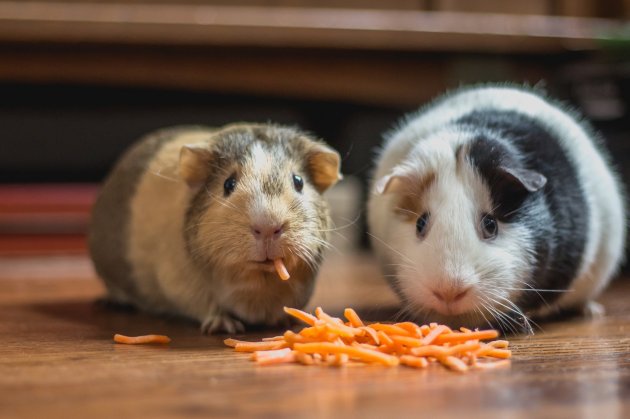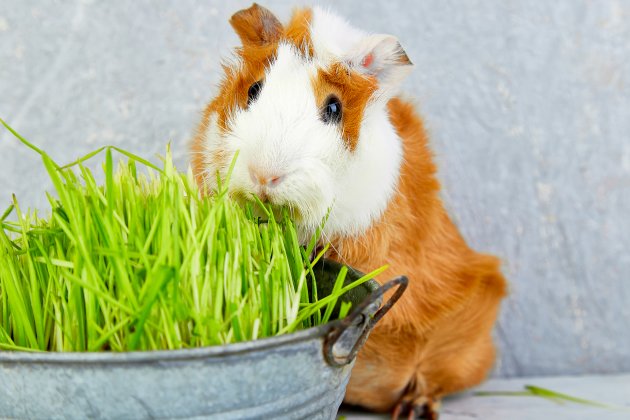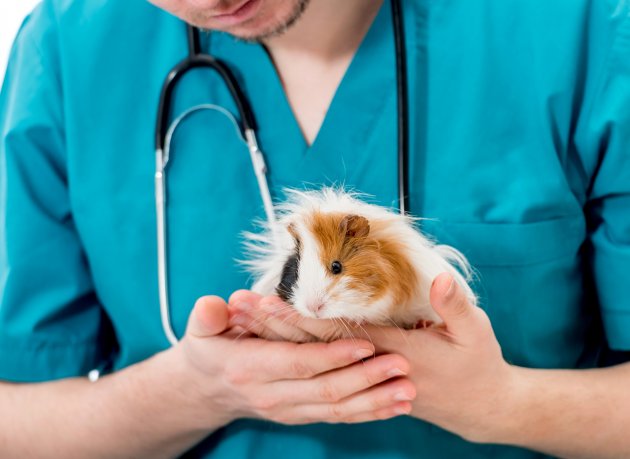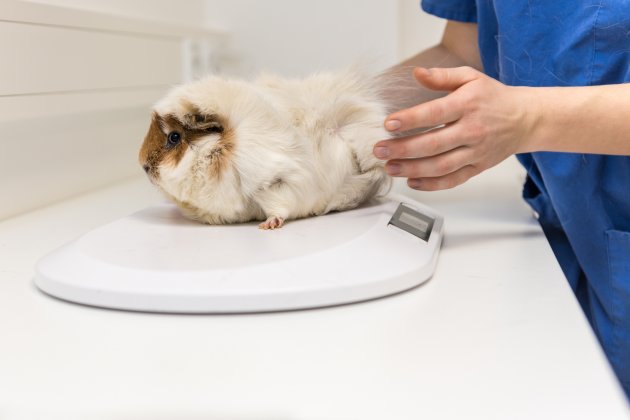Guinea pigs are very common house pets for people to own. These are small animals that can be kept in a small apartment and are great first pets for kids. With any animal, there is always the potential for illness. These are some of the most common diseases that affect Guinea pigs.
1. Vitamin C deficiency (Scurvy)
A prevalent disease seen in guinea pigs is Scurvy. This is due to a vitamin C deficiency. Guinea pigs are unable to make vitamin C, as most people can, so they need added vitamin C in their diets. Signs of Scurvy in Guinea Pigs are:
- Lameness – "Bunny hopping"
- Lethargy
- Joint pain
- Rough hair coat
The treatment for Scurvy is correcting the diet by adding vitamin C. Sometimes, in severe cases, hospitalization is needed to provide fluids, pain medications, and nutritional support. Many times, these guinea pigs can be treated as outpatients.
Scurvy can be prevented by giving daily supplements of vitamin C. Vitamin C degrades very quickly. A vitamin C deficiency can occur if supplements are offered in water or if the supplements are old.

2. Bumblefoot (Ulcerative Pododermatitis)
Bumblefoot is an infection on the underside of the Guinea Pig's feet. This occurs when the Guinea Pig is standing on hard surfaces for too long. Usually, the guinea pig is overweight, causing more pressure on the bottoms of their feet. This pressure causes the tissue to die and slough off. This is an excellent place for bacteria to grow and ulcerations to happen. There are many signs seen with bumblefoot
- Mild symptoms such as the bottom of the feet become red, and feet become swollen
- Moderate signs include pus, ulceration, and scabs on the feet.
- Severe signs include bone and tendon involvement leading to an abnormal stance.
To treat bumblefoot, your veterinarian will examine your guinea pig and prescribe them antibiotics and pain medication. Depending on the severity of the disease, they may give you something to clean the bottom of the feet and topical medications.
To help prevent bumblefoot, make sure your guinea pig is on a soft surface or has soft bedding for them to walk around on. It is best not to overfeed your guinea pig as obesity can cause many health problems, including bumblefoot.
3. Overgrown teeth
Guinea pig's, just like most rodents', teeth are continually growing. Your guinea pig should have approved toys to chew on to wear down their teeth. If they do not chew on these toys, their teeth can overgrow, leading to lots of problems. Signs that your guinea pig may need their teeth checked are:
- Excessive drooling
- Dropping their food
- Not eating
- Weight loss
- Visually seeing the teeth are too long
If you notice any of these signs in your guinea pig, take them to your veterinarian immediately as this dental problem can be very painful. Your veterinarian will sedate your guinea pig and examine their mouth to see if their teeth are overgrown. If they are, they can file the teeth back down to a regular length.
Usually, teeth overgrowth can be prevented by giving your guinea pig approved chew toys and hay. Some guinea pigs are predisposed to dental problems, and even with the proper toys and hay will still need their teeth filed.

4. Ileus
Ileus is the slowing down of the gastrointestinal tract. When the intestinal tract slows down, there is little to no food being able to be digested and pass through. This is a very painful condition that can cause your guinea pig to become dehydrated and even die. Signs that your guinea pig’s gastrointestinal tract has slowed down or even stopped are:
- Not eating
- Small fecal pellets
- Lethargic
- Grinding teeth and acting painful
If you notice any of these signs, bring your guinea pig to your veterinarian immediately as this can cause death very quickly if not treated. Your veterinarian will give your guinea pig fluids, medication to help increase the movement in the gastrointestinal tract, pain medication, antibiotics, and syringe feedings.
To help make sure that your guinea pig's gastrointestinal tract is moving, give them plenty of hay and water. The hay helps stimulate the digestive tract. The water makes sure that their gastrointestinal tract is fully hydrated.
5. Bladder stones (Uroliths)
Bladder stones can commonly form in a guinea pig’s bladder. These stones can move around in the bladder, causing inflammation of the lining of the bladder leading to infection and bloody urine. Bladder stones are created from too high levels of calcium in the diet. Signs of bladder stones can include:
- Straining to urinate
- Bloody urine
- Pain when urinating
- Weight loss
Most stones need surgery to remove them and then transitioning them to a special diet to help stones from recurring.

6. Lice and Mites
Lice or mites in Guinea Pigs is a very itchy condition. Your guinea pig will be itching, having hair loss, and have flaky skin. Your veterinarian can diagnose your pet with lice or mites. Most of the time, lice and mites are microscopic and need a veterinarian to find them.
These can be easily treated with topical medication. Most veterinarians use Revolution or advantage Multi. These are prescription flea and tick medications used for cats but also approved for use in small mammals for treatment of lice and mites.
7. Uterine and Ovarian masses
Unfortunately, Guinea Pigs, like most other small rodents, are prone to uterine cancer. These tumors usually start with these signs:
- Blood in urine or on back end
- Not eating
- Bulging abdomen
The only way to get rid of the cancer is for your guinea pig to be spayed and remove the uterus and ovaries.

8. Respiratory diseases
Guinea pigs can commonly get upper respiratory infections. Inflammation of the nose and upper airways make an excellent place for bacteria to take over. Common signs seen in Guinea pigs with a respiratory disease include:
- Sneezing
- Discharge from the eyes
- Head tilt
- Not eating
Your veterinarian can determine the exact cause of the upper respiratory infection and help you with treatment. These treatments usually include antibiotics. If your guinea pig is not eating or drinking, then fluid therapy and syringe feedings are needed. Sometimes guinea pigs will show upper respiratory signs due to the type of bedding that you are using. The strong-smelling wood chips are not best for guinea pigs, as these irritate their respiratory tract.
Conclusion
If you notice any abnormal signs with your guinea pig, it is best to seek veterinary care immediately. The longer you wait to get medical care for your pet, the more serious the disease can get. Guinea pigs are considered prey animals, meaning that they will not show signs of disease until sometimes it is too late to save them. Examine your guinea pig daily and making sure that there are no problems with them. The quicker they receive medical attention, the better.
Further reading:
- ResearchGate. Vladimir Jekl. Diseases in pet guinea pigs: a retrospective study in 1000 animals